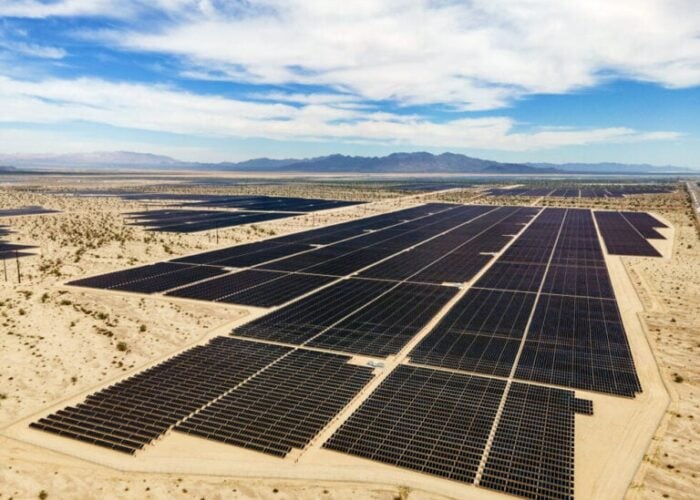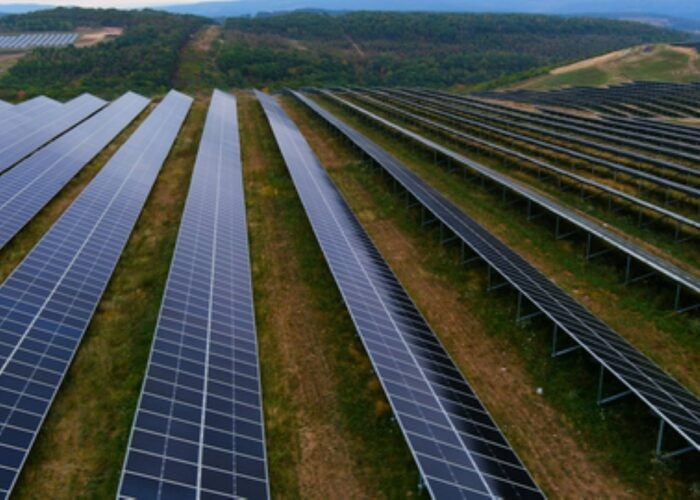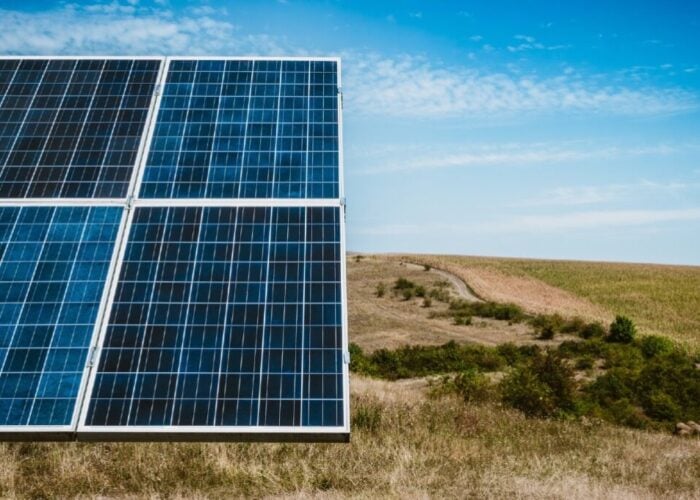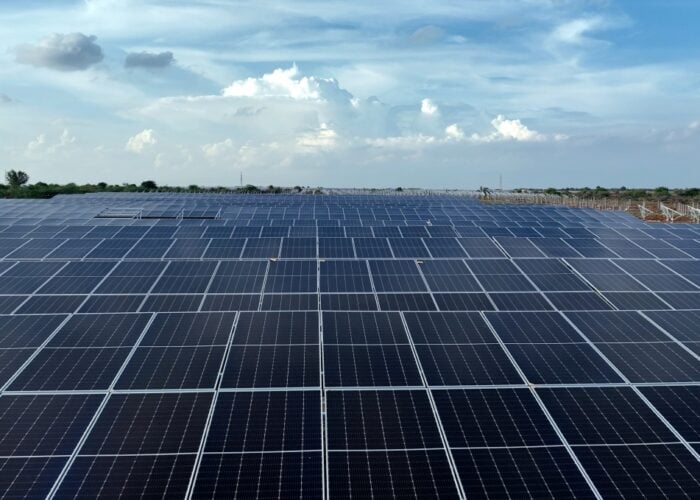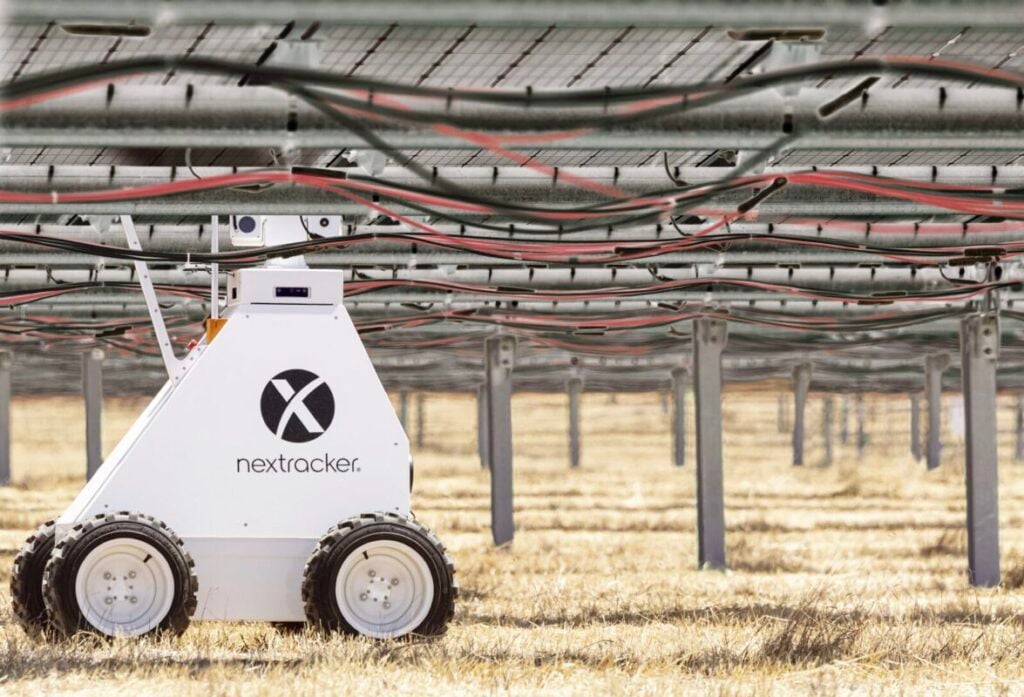
US solar tracker manufacturer Nextracker recorded revenues of US$864 million and a gross margin of 32.6% in the quarter ending 27 June, 2025.
The company has also acquired three robotics and AI technologies as part of its ongoing strategy to offer additional technologies surrounding its core tracker business.
Try Premium for just $1
- Full premium access for the first month at only $1
- Converts to an annual rate after 30 days unless cancelled
- Cancel anytime during the trial period
Premium Benefits
- Expert industry analysis and interviews
- Digital access to PV Tech Power journal
- Exclusive event discounts
Or get the full Premium subscription right away
Or continue reading this article for free
Year-on-year growth, quarterly contraction
In the most recent quarter, which Nextracker treats as the first of the 2026 financial year, the company recorded total revenues of US$864 million and gross profit of US$282 million. Both of these are down slightly from the previous quarter, when revenues were US$924 million and profits US$306 million. Gross margin fell slightly from 33.1% last quarter to 32.6% this time around.
The most recent quarter saw a 20% increase in revenue compared with the same period last year and a 19% increase in gross profit.
As of the end of June, Nextracker has an operating cash flow of US$81 million and US$743 million in cash with no debt.
Its Q1 FY2026 results also included approximately US$93 million in Inflation Reduction Act (IRA) 45X advanced manufacturing credit vendor rebates. In December last year, Nextracker announced its first tracker products that comply with the IRA’s domestic content manufacturing rules. The company has around 25GW of domestic US manufacturing capacity, including both tracker facilities and steel works.
Nextracker has sought put itself atop the global tracker market; research from Wood Mackenzie said that Nextracker had a 26% global market share in 2024, shipping 28.5GW of trackers. This is as the tracker market as a whole grew by around 20%.
Its financial results bear this story out. As per the graph below, the company’s revenues have been consistently high in recent years, and tracker use is expected to continue growing as developers and asset owners look to get the most possible power from their PV installations.
The US may begin to play a changing role in Nextracker’s revenues in the coming years. Wood Mackenzie said that the US tracker market shrank by 9% in 2024, and since then, the White House has turned firmly against the tax support that had previously supported the solar industry.
However, Nextracker adjusted its full-year outlook upwards, increasing forecast revenue, net income and adjusted EBITDA compared with its previous outlook.
The company said: “Our outlook assumes the current US policy environment remains in effect, and in addition, that permitting processes and timelines will remain consistent with historical levels. The company is closely monitoring potential updates to safe harbour provisions and other regulatory actions, which could impact project timing, investment decisions and our financial results.”
Robotics acquisitions
Nextracker has also bought three robotics and AI technologies, all of which expand its plant maintenance and modelling capabilities. The acquisitions represent over US$40 million in investment, Nextracker said. The company has created a new division and appointed its first AI and robotics officer to oversee the new activity.
The most recent acquisition is California-based OnSight Technology, which produces autonomous robotics inspection and fire detection systems for solar power plants. The company says their product is an “AI-driven, computer-vision robotic platform” which can collect and analyse data to identify and predict problems at “large remote” solar PV sites.
Nextracker also acquired Amir Robotics in March 2025, which produces “water-free robotic cleaning systems” to reduce power yield losses from dirty modules.
In addition, the company bought SenseHawk IP, an AI-enabled drone technology that “enables the creation of high-resolution 3D as-built maps of solar project sites”.
Dan Shugar, founder and CEO of Nextracker, said: “With millions of sensors and control nodes already deployed over approximately 100GW of operating systems in 40 countries, Nextracker has a unique opportunity to harness AI and robotics at scale.”
Francesco Borrelli, the new AI and robotics officer at Nextracker, added: “Scaling solar to meet global energy demand requires a new level of autonomy in how we build and operate power plants.”
SolarPower Europe has previously identified robotics and a focus on data as “key trends” in the solar operations and maintenance (O&M) sector.
Prior to the robotics and AI acquisitions, Nextracker acquired a swathe of solar hardware companies to expand its business into electrical components and project foundations. It bought foundation firms Solar Pile International and Ojjo last year, and earlier this year it bought electrical balance of system (eBOS) firm Bentek.


